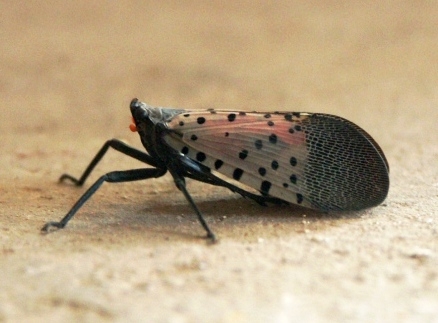
“They've been appearing in grapes, and we have reports from growers last year of a 90 percent loss,” said Julie Urban, a senior research associate at Penn State.
The reporter also contacted UC Cooperative Extension advisor Surendra Dara, who published an article in 2014 about spotted lanternfly in Pest News, a UC Agriculture and Natural Resources eJournal about endemic and invasive pests in California.

Dara told Times' reporter that lanternfly has the unusual ability to lay eggs on almost any surface — plants and soil as well as wheel wells, train cars and shipping containers.
“Most pests deposit their eggs on their host plant, or very close, so they already have food available,” Dara said. “Those that have the advantage of being able to lay eggs on non-plant material obviously have a better chance of surviving and spreading."